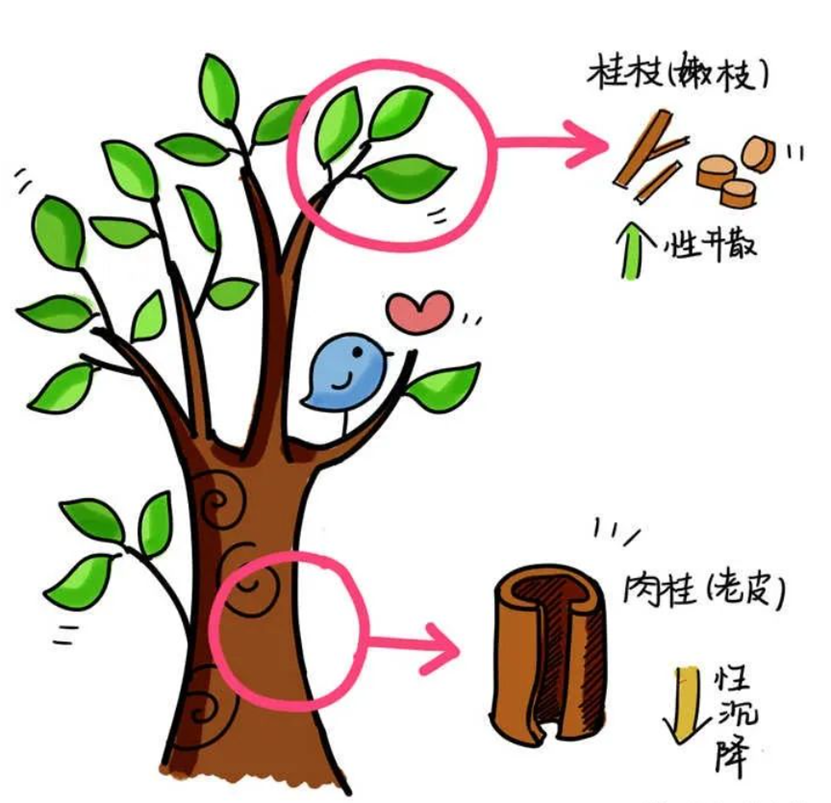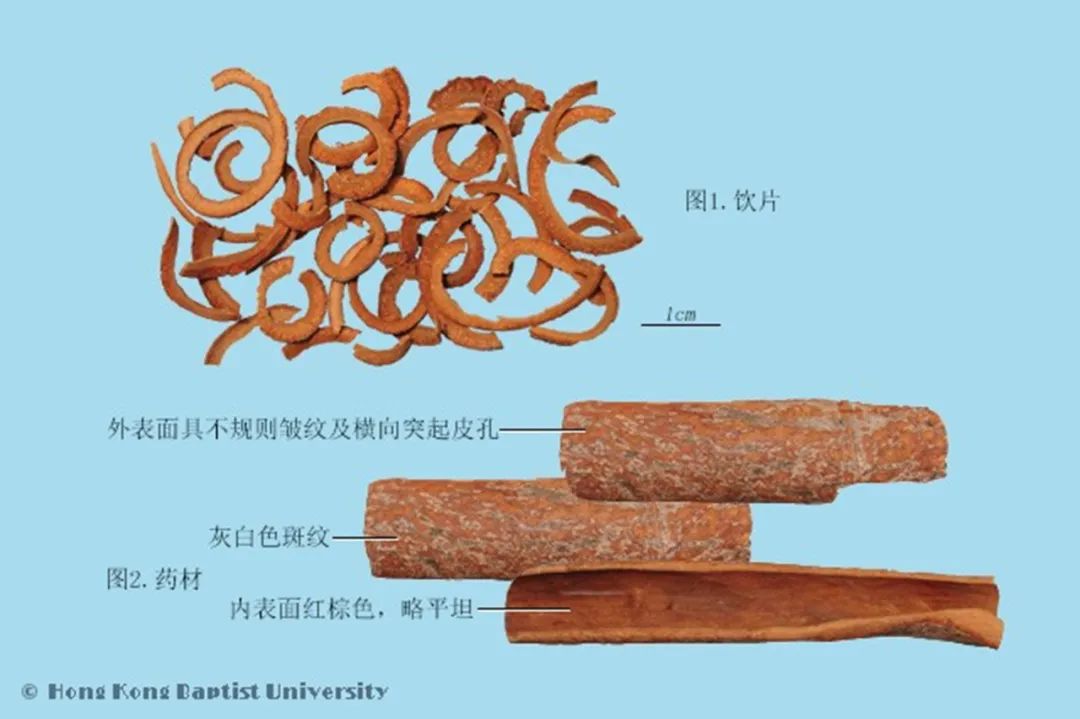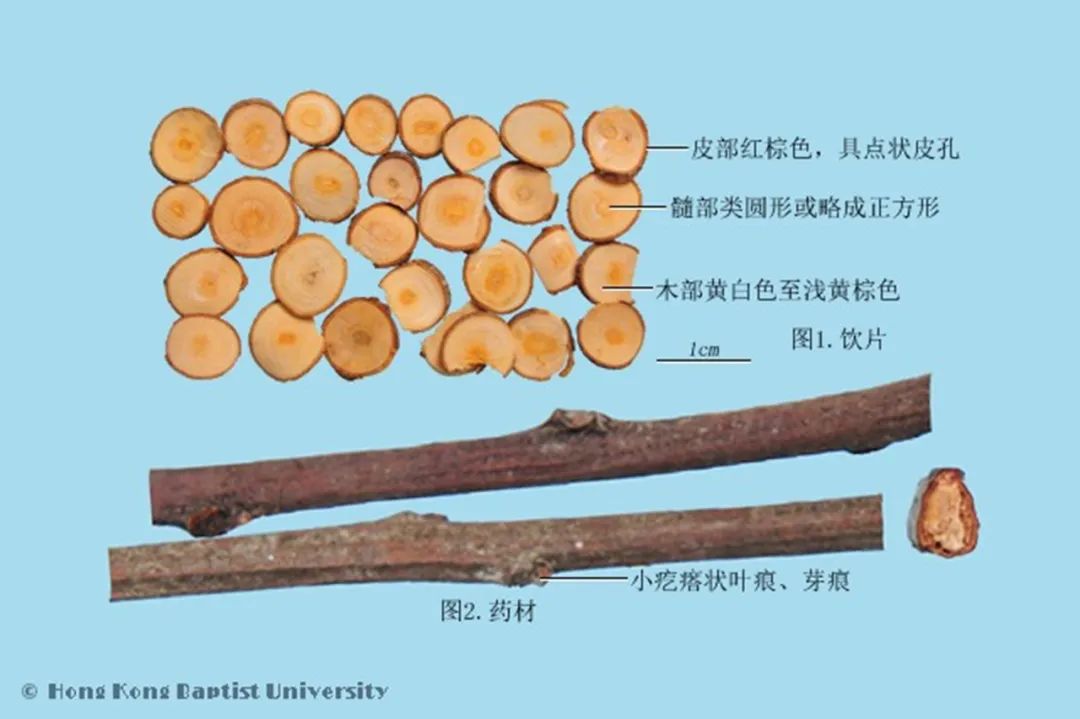Gui Zhi and Rou Gui
When it comes to Gui Zhi, you may not be very familiar, but Rou Gui is a spice that everyone should know. It is an excellent and commonly used spice, essential in cooking and marinating dishes.
Rou Gui is the dried bark of the tree Cinnamomum cassia, belonging to the Lauraceae family, primarily produced in Guangxi, Guangdong, Hainan, and other regions. Due to differences in harvesting locations and quality, it is processed into various specifications, commonly including Qi Bian Gui, Ban Gui, and Gui Tong, used raw. Gui Zhi refers to the tender branches of the same tree, used raw.

01Rou Gui
【Name】Rou Gui
【Latin】Cinnamomi Cortex
【Category】Bark
【Source】Dried bark of the plant Cinnamomum cassia Presl from the Lauraceae family.
【Production Area】Mainly produced in Guangdong, Guangxi, Fujian, Hainan, and other regions.
【Characteristics】
Qi Bian Gui: Long strip-shaped, with both sides curling inward, the curled edges forming a semi-tube shape, the center of the groove slightly raised, the outer bark concave, approximately 43 cm long and 4-6 cm wide, with a brown-gray or brown outer bark, each end having a 5 mm sloped surface with brown color. The entire piece has irregular transverse pores and numerous small protruding tubercles. Occasionally, there are slightly raised transverse lines and gray-green patterns (marks left by moss-like plants, commonly known as colored skin). The inner surface is dark red-brown or brown, smooth, and when scratched with a nail, deep brown oil patterns can be seen. The aroma is strong, with a sweet and spicy taste.
Ban Gui: Flat and plate-like, slightly curved inward on both sides, 43 cm long, 13-15 cm wide, 0.6 cm thick, with a rough outer bark, gray-brown; the inner bark is dark purple, the cross-section shows a brown oil layer, the outer layer is brown-red, generally with less oil and more residue, with a milder aroma and sweet-spicy taste.
Yao Gui: Half bamboo tube-shaped, with both ends slightly sloped, 43 cm long, with a gray-brown or brown outer surface, often with gray-green spots (colored skin), the inner surface is dark brown, hard and brittle, with a distinct and concentrated inner oil layer, slightly shiny, black or brown, and the outer layer is purple-red, with a strong aroma and sweet-spicy taste.
Gui Tong: Double cylindrical or cylindrical shape, 35 cm long, 0.1-0.3 cm thick, gray-brown outer surface with fine wrinkles and small cracks, elliptical pores, occasionally with raised transverse lines and gray patterns. The inner surface is dark brown. Hard and brittle, with a purple-red or brown-red cross-section, aromatic, with a sweet and spicy taste. Also known as “Gui Pi” or “Gui Er Tong”. Gui Xin: Similar in shape to Gui Tong, but the outer cork layer has been completely scraped off, with both inner and outer bark appearing brown-yellow.
Gui Sui: Irregularly sized pieces or short rolled tubes, with gray-brown outer bark, and the cross-section and inner bark are brown or brown-red, aromatic, with a sweet and spicy taste.
【Quality】The best quality is characterized by being whole and unbroken, thick and heavy, with a surface that has fine wrinkles, high oil content, and strong aroma.
【Properties】Spicy, sweet, and very warm.
【Functions】Supplement fire and assist yang, guide fire back to the source, disperse cold and relieve pain, invigorate blood and regulate menstruation. Warm the spleen and stomach, eliminate accumulated cold, and open blood vessels. Treat kidney yang deficiency, cold limbs, weak pulse, yang collapse, abdominal pain and diarrhea, cold hernia, low back and knee pain, menstrual disorders, yin sores, and floating yang.

02Gui Zhi
【Name】Gui Zhi
【Latin】Cinnamomi Ramulus
【Category】Woody vines
【Source】Dried tender branches of the plant Cinnamomum cassia Presl from the Lauraceae family.
【Production Area】Mainly produced in Fujian, Guangdong, Guangxi, and other regions.
【Characteristics】Long cylindrical shape, multi-branched, 30-75 cm long, with a thick end diameter of 0.3-1 cm. The surface is red-brown to brown, with longitudinal ridges, fine wrinkles, and small bumps from leaf scars, branch scars, and bud scars, with punctate pores. Hard and brittle, easy to break. Slices are 2-4 mm thick, with the skin part being red-brown, the wood part yellow-white to light brown, and the pith slightly square. Has a distinctive aroma, sweet taste, and slightly spicy flavor, with the skin part being more flavorful.
【Quality】Best quality is characterized by tender, uniform branches, brown-yellow color, and strong aroma.
【Properties】Spicy, sweet, and warm.
【Functions】Induces sweating and relieves muscle tension, warms and opens meridians, assists yang and transforms qi, regulates and descends qi. Used for wind-cold colds, abdominal cold pain, blood cold menstrual disorders, joint pain, phlegm retention, edema, palpitations, and floating yang.

Identification Points
Identification by Characteristics:
【Gui Zhi】 Long cylindrical shape, multi-branched. The surface is red-brown to brown, with longitudinal ridges, fine wrinkles, and small bumps from leaf scars, branch scars, and bud scars, with punctate pores. Hard and brittle, easy to break. Slices are 2-4 mm thick, with the skin part being red-brown, the wood part yellow-white to light brown, and the pith slightly square. Has a distinctive aroma, sweet taste, and slightly spicy flavor, with the skin part being more flavorful.
【Rou Gui】 Slot-shaped or rolled tube-shaped, 0.2-0.8 cm thick. The outer surface is gray-brown, slightly rough, with irregular fine wrinkles and transverse protruding pores, some with gray-white spots; the inner surface is red-brown, slightly flat, with fine longitudinal lines, showing oil marks when scratched. Hard and brittle, easy to break, with an uneven cross-section, the outer layer is brown and rough, while the inner layer is red-brown and oily, with a yellow-brown line between the two layers. The aroma is strong, with a sweet and spicy taste.
Function Identification:
Similarities: Both have spicy and sweet flavors, entering the heart, spleen, liver, and kidney meridians. Both can disperse cold and relieve pain, warm and open meridians, and can treat cold-congealed blood stasis and wind-cold dampness syndromes. They can also assist the yang qi of the heart, kidney, and spleen, commonly used for yang deficiency syndromes of these three organs. Both have strong spicy and warm properties, easily entering the blood and moving it, thus should not be used excessively or for long periods; those with excess heat, yin deficiency with yang hyperactivity, and blood heat should avoid use, and pregnant women should use with caution; when used, they should not be boiled for long but added later.
Differences: Rou Gui is spicy, sweet, and very warm, excelling at warming the interior and dispelling cold, commonly used to treat interior cold syndromes; it can also supplement fire and assist yang, guiding fire back to the source, and can treat kidney yang deficiency, cold limbs, weak pulse, fear of cold, weak lower back and knees, frequent night urination, impotence, and floating yang leading to shortness of breath and palpitations. Compared to Rou Gui, Gui Zhi has milder spicy and warm properties, also entering the lung meridian, promoting sweating and warming yang in the defensive layer, thus invigorating blood circulation in the muscle surface, excelling at dispersing exterior cold, used for wind-cold exterior syndromes and shoulder and arm pain; it also assists yang transformation, promotes urination, and reduces edema, treating kidney and bladder yang deficiency with cold congealment, qi transformation issues leading to urinary difficulties, and edema and phlegm retention syndromes.
In summary, Rou Gui and Gui Zhi both come from the cinnamon tree, one being its bark and the other its tender branches. Both have the effects of warming blood, assisting qi transformation, and dispersing cold congealment. However, Rou Gui is good at warming the interior and dispelling cold, entering the lower jiao to supplement kidney yang; Gui Zhi excels at dispersing exterior cold, primarily ascending and opening meridians, and clinical use should pay attention to the distinctions.
END
Image source: Internet (infringement will be removed)
Edited by:
Liu Ying Tu Xingxing Zhao Linlin Li Xiayan Wang XiaoyingProofread by: Wu DongChief Editor: Wang XiaojuanNO.1Previous Issues
Do medicines need to be stored away from light, and should you also protect from sunlight after taking them?
Health “snack” almonds
“Kitchen waste” – treasures of the pharmacy
The correct method for using eye drops
Official WeChat account of the Pharmacy Department of Fuyang People’s Hospital
— Thank you for your attention!


